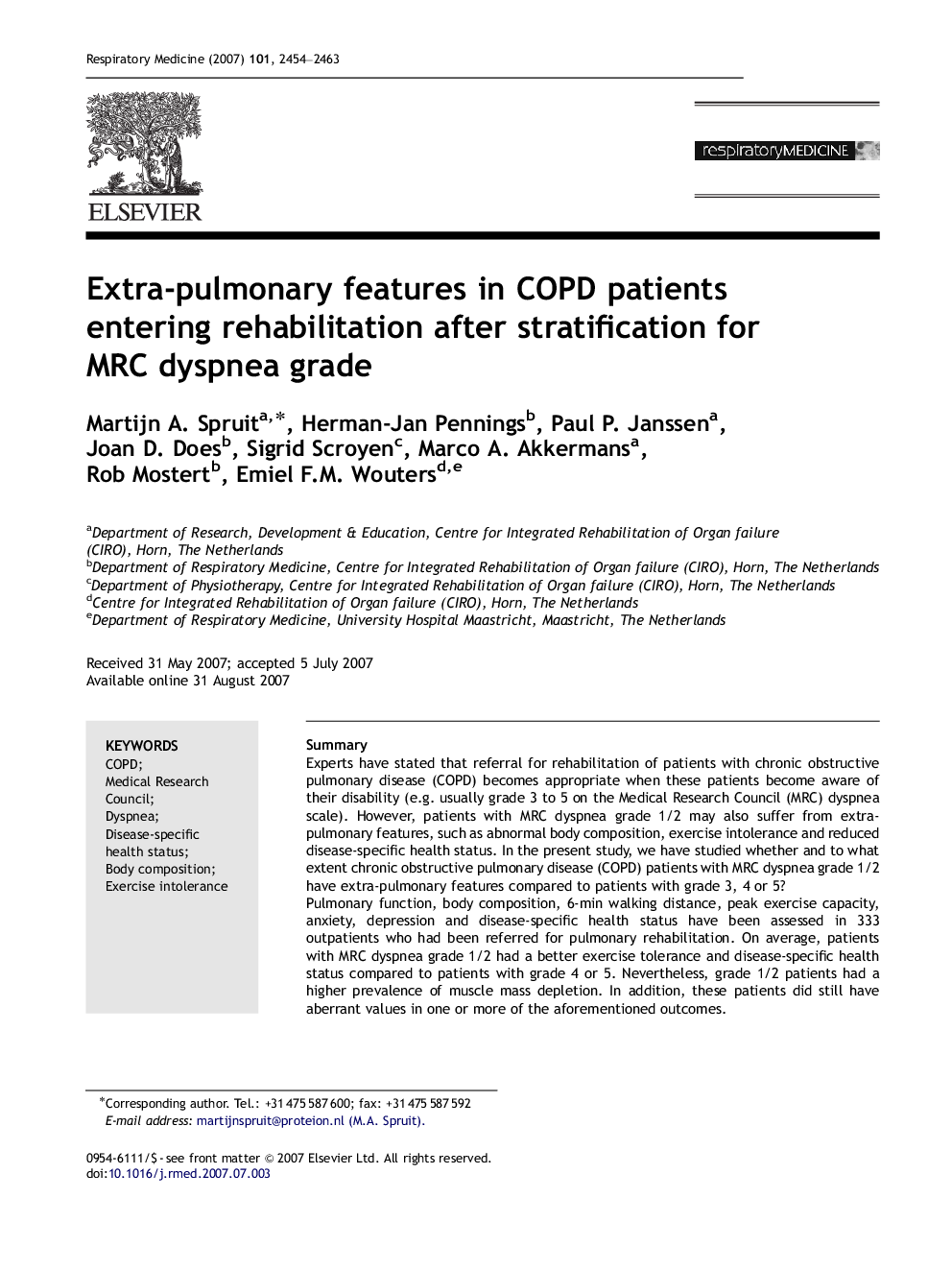| Article ID | Journal | Published Year | Pages | File Type |
|---|---|---|---|---|
| 4211586 | Respiratory Medicine | 2007 | 10 Pages |
SummaryExperts have stated that referral for rehabilitation of patients with chronic obstructive pulmonary disease (COPD) becomes appropriate when these patients become aware of their disability (e.g. usually grade 3 to 5 on the Medical Research Council (MRC) dyspnea scale). However, patients with MRC dyspnea grade 1/2 may also suffer from extra-pulmonary features, such as abnormal body composition, exercise intolerance and reduced disease-specific health status. In the present study, we have studied whether and to what extent chronic obstructive pulmonary disease (COPD) patients with MRC dyspnea grade 1/2 have extra-pulmonary features compared to patients with grade 3, 4 or 5?Pulmonary function, body composition, 6-min walking distance, peak exercise capacity, anxiety, depression and disease-specific health status have been assessed in 333 outpatients who had been referred for pulmonary rehabilitation. On average, patients with MRC dyspnea grade 1/2 had a better exercise tolerance and disease-specific health status compared to patients with grade 4 or 5. Nevertheless, grade 1/2 patients had a higher prevalence of muscle mass depletion. In addition, these patients did still have aberrant values in one or more of the aforementioned outcomes.On average, patients with MRC dyspnea grade 1/2 may clearly suffer from extra-pulmonary features, indicating the necessity to refer these patients for rehabilitation. Therefore, MRC dyspnea scale alone does not appear to be a suitable measure to identify most patients with COPD who have to be referred for rehabilitation.
